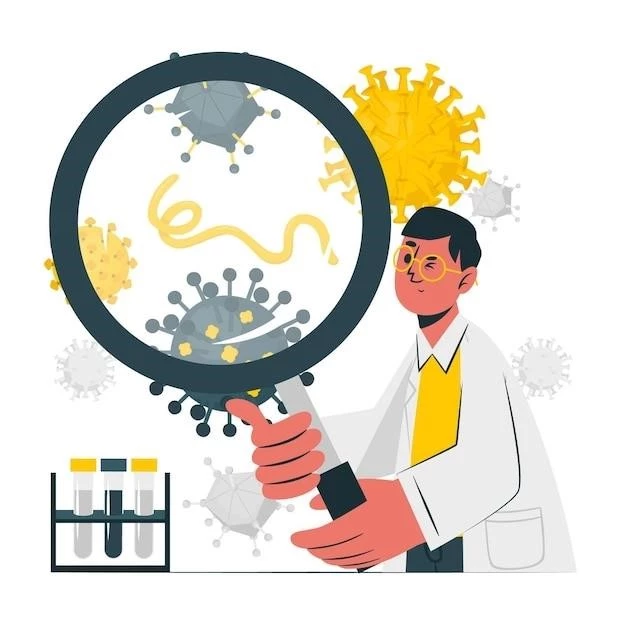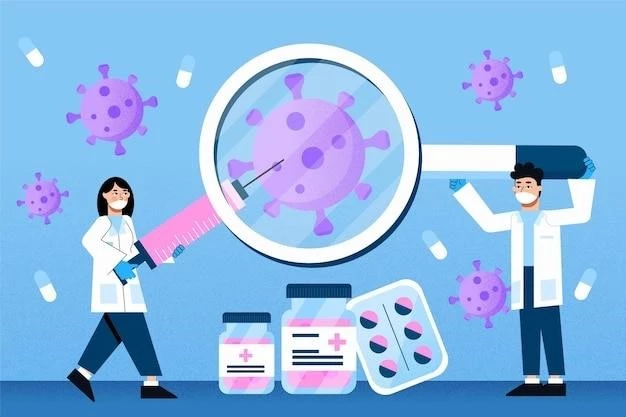Overview of Pseudomonas Infection
Pseudomonas can cause various types of infections including bacteremia, bone and joint infections, bronchitis in cystic fibrosis patients, and skin sore called ecthyma gangrenosum․
Pseudomonas aeruginosa is a challenging organism due to antibiotic resistance and ability to infect both immunocompromised and healthy individuals․
Introduction to Pseudomonas aeruginosa
Pseudomonas aeruginosa is a Gram-negative rod commonly associated with nosocomial infections․ It is capable of causing a variety of infections in both immunocompetent and immunocompromised hosts, presenting challenges due to its versatility, antibiotic resistance, and dynamic defenses․
This bacterium is frequently found in hospital settings and can lead to severe hospital-acquired infections, especially in immunocompromised individuals․ Understanding its impact, modes of transmission, and ability to develop resistance is crucial in combating infections caused by P․ aeruginosa․
Types of Pseudomonas Infections
Pseudomonas infections can manifest in bacteremia, bone and joint infections in IV drug abusers, bronchitis in cystic fibrosis patients, and the development of a skin sore known as ecthyma gangrenosum․
Bacteremia and its Severity
Bacteremia caused by Pseudomonas is a serious bloodstream infection that can lead to severe complications․ It is crucial to diagnose and treat bacteremia promptly to prevent further spread and systemic complications․ Patients with underlying health conditions are at higher risk for severe outcomes and may require intensive care management․
Bone and Joint Infections in IV Drug Abusers
Pseudomonas infections can lead to bone and joint infections in individuals who abuse intravenous drugs․ These infections can be severe and challenging to treat, often requiring a multidisciplinary approach for effective management and reducing the risk of complications․
Bronchitis in Cystic Fibrosis Patients
Pseudomonas infection can lead to bronchitis in cystic fibrosis patients․ This condition can exacerbate respiratory symptoms and pose challenges in managing the underlying lung disease associated with cystic fibrosis․ Early detection and targeted treatment are essential to prevent further deterioration and improve patient outcomes․
Skin Sore⁚ Ecthyma Gangrenosum
Pseudomonas infection can lead to the development of ecthyma gangrenosum, a skin sore commonly seen in individuals with compromised immune systems․ Prompt diagnosis and targeted treatment are crucial to prevent the progression of this potentially serious skin condition․
Risk Factors for Pseudomonas Infection
Pseudomonas infections can affect individuals with weakened immune systems, such as cancer, cystic fibrosis, and burn patients․ Risk factors include hospitalization, invasive procedures, prolonged antibiotic use, and exposure to contaminated environments․ Understanding these risk factors is crucial in preventing and managing Pseudomonas infections effectively․
Clinical Manifestations of Pseudomonas Infection
Pseudomonas infections can manifest in various ways depending on the affected area․ Common clinical manifestations include bacteremia, bone and joint infections, bronchitis in cystic fibrosis patients, and skin sores like ecthyma gangrenosum․ Recognizing these manifestations and seeking prompt medical attention is crucial for effective treatment and management of Pseudomonas infections․

Diagnosis and Treatment Options
Pseudomonas infections require prompt diagnosis and targeted treatment․ Early detection is essential to prevent complications․ Treatment options may include antibiotic therapy, wound care, and supportive measures․ It is crucial to consult a healthcare provider for proper management of Pseudomonas infections․
Antimicrobial Resistance in Pseudomonas Infections
Pseudomonas infections pose a significant challenge due to increasing antimicrobial resistance․ This resistance can complicate treatment and lead to persistent infections․ Healthcare providers need to be vigilant in selecting appropriate antibiotics and monitoring patients for any signs of resistance to ensure effective management of Pseudomonas infections․
Importance of Early Diagnosis
Early diagnosis of Pseudomonas infections is crucial for initiating timely treatment and preventing the progression of the infection․ Prompt identification of the causative organism through appropriate diagnostic tests allows healthcare providers to implement targeted therapies effectively․ Seeking medical attention at the first signs of infection can significantly impact the outcome of Pseudomonas infections․
Prevention Strategies for Pseudomonas Infection
Preventing Pseudomonas infections involves implementing various strategies to reduce the risk of exposure and transmission․ Key prevention measures include ensuring proper hand hygiene, maintaining a clean environment, using sterile techniques in healthcare settings, and employing appropriate infection control practices․ Understanding the sources and routes of transmission of Pseudomonas is essential for implementing effective prevention strategies and minimizing the spread of infections․

Impact of Pseudomonas Infection in Immunocompromised Patients
Pseudomonas infections have a significant impact on immunocompromised patients, including those with cancer, cystic fibrosis, and burns․ These individuals are more susceptible to severe complications and higher fatality rates associated with Pseudomonas infections․ Proper management and early intervention are crucial in minimizing the impact of Pseudomonas infections in immunocompromised populations․
Research and Advancements in Pseudomonas Infection Treatment
Ongoing research focuses on combating Pseudomonas infections, especially in hospital settings where antimicrobial resistance is a growing concern․ Advancements in treatment options, including novel anti-infectives and combination therapies, aim to address the challenges posed by drug-resistant strains․ As studies continue to explore innovative approaches, staying informed about the latest developments in Pseudomonas infection treatment is crucial for healthcare providers and researchers alike․
